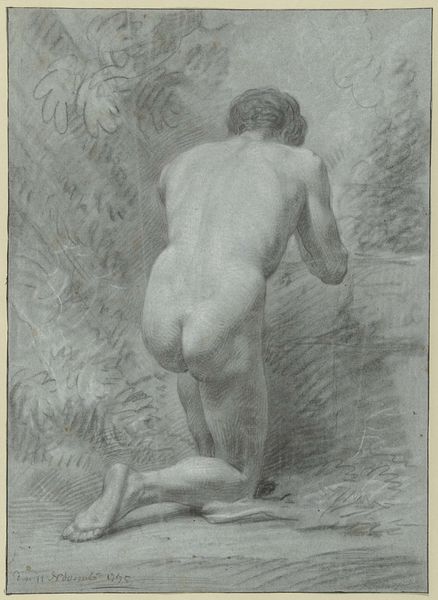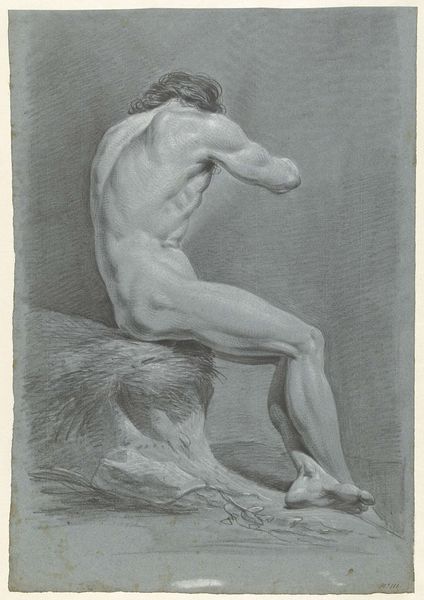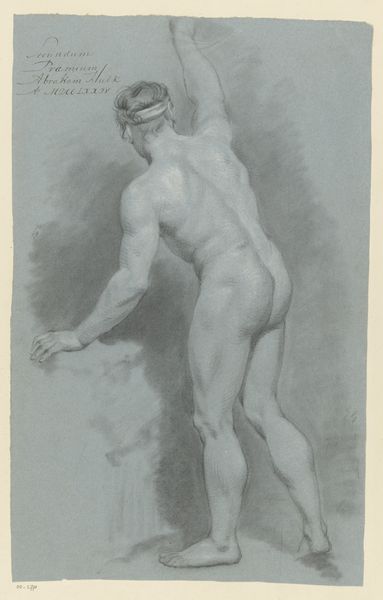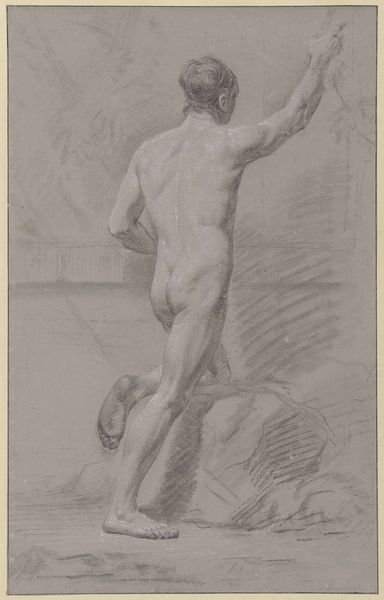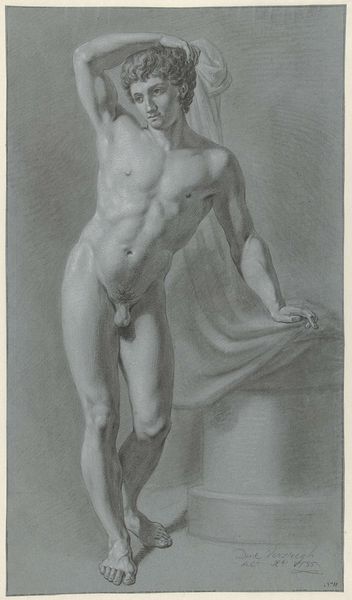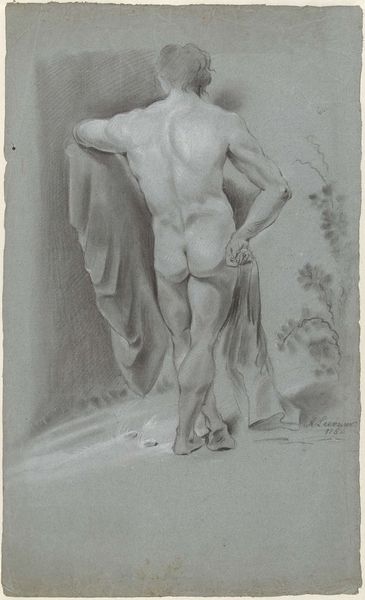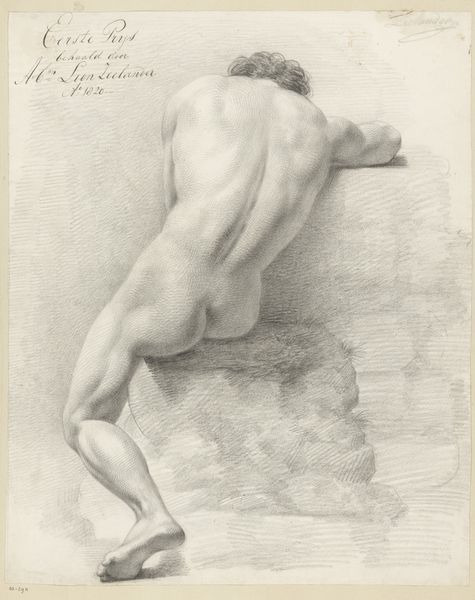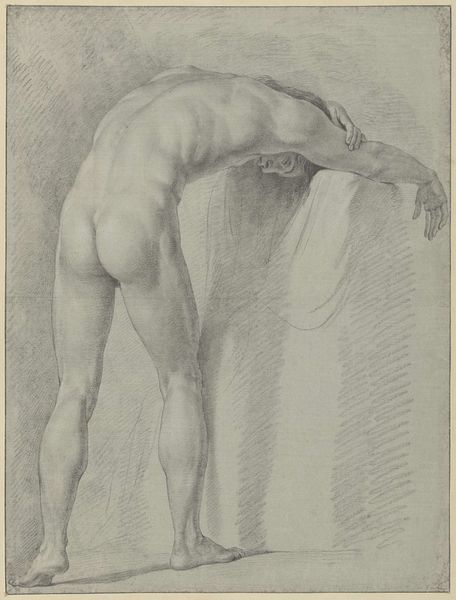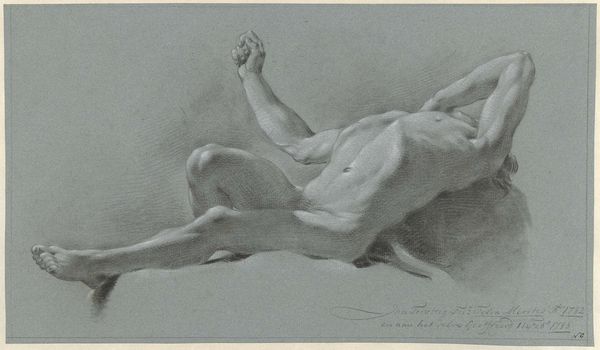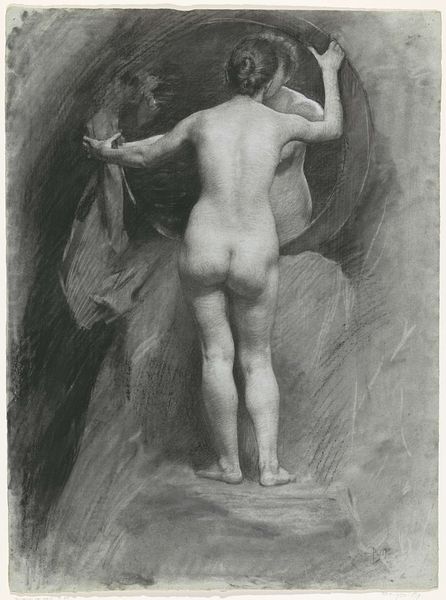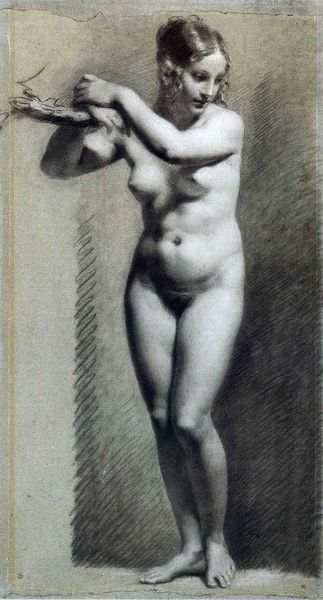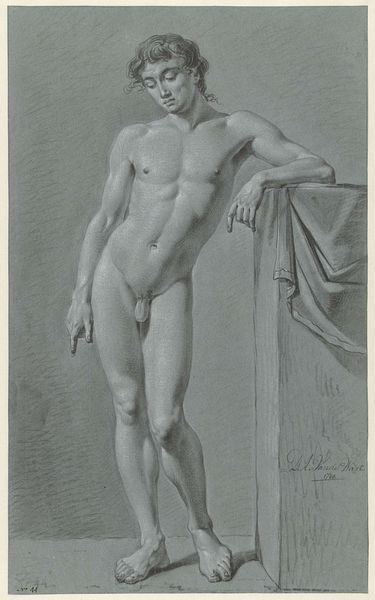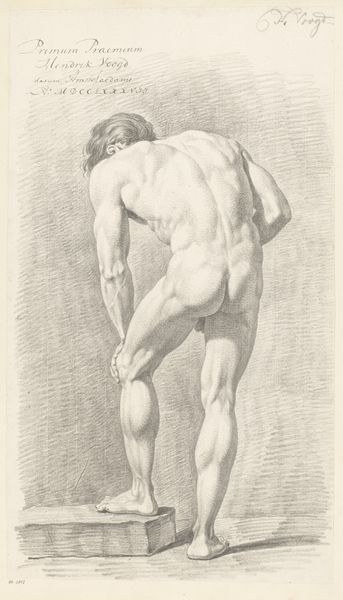
Staand mannelijk naakt met opgeheven wijzende rechterarm, op de rug gezien 1765 - 1781
0:00
0:00
drawing, dry-media, pencil
#
pencil drawn
#
drawing
#
figuration
#
dry-media
#
pencil drawing
#
classicism
#
pencil
#
genre-painting
#
academic-art
#
nude
Dimensions: height 489 mm, width 290 mm
Copyright: Rijks Museum: Open Domain
Curator: This pencil drawing by Jean Grandjean, likely created between 1765 and 1781, depicts a standing male nude, viewed from the back, with his right arm raised and pointing. Editor: The first thing that strikes me is the figure’s incredible solidity, even though it's just pencil on paper. The tonal gradations really give it volume. Curator: Absolutely. These academic studies of the male nude were very common in that era. Artists like Grandjean sought to capture the ideal male form rooted in classical Greek and Roman sculpture. It speaks to ideas of masculine power and beauty perpetuated through art. Editor: But even beyond the cultural context, look at how Grandjean has managed to model the figure. The subtle shifts in shading across the back and shoulders give such a tactile quality to the skin. It's almost sculptural. And see how he directs our gaze upward through the carefully articulated line of the spine, ending at the nape of his neck. It creates such an elegant curve! Curator: Yet, let’s not forget the political backdrop of this idealized form. Whose bodies were considered worthy of artistic representation at the time? The canon of art history, for so long, privileged white, male figures, perpetuating societal hierarchies and erasing other narratives. Even the very pose seems declarative, but the man has no face. His gesture could easily be interpreted as exclusionary rather than invitational, which is another historical reading to consider here. Editor: You're right, the absence of a face does introduce a level of ambiguity. It leaves us to contemplate the body itself, its form, and the artist's skill in capturing it. What’s missing, though, is an acknowledgement of that person’s individual identity or story. The body becomes a kind of symbol. Curator: Symbols are powerful, both in what they reveal and conceal. Examining works like this—understanding both their technical skill and their cultural implications—is essential for a more inclusive art history. Editor: It's a great reminder that even seemingly straightforward drawings can contain complex and often contradictory ideas about beauty, power, and representation. I find that fact incredibly engaging.
Comments
No comments
Be the first to comment and join the conversation on the ultimate creative platform.
